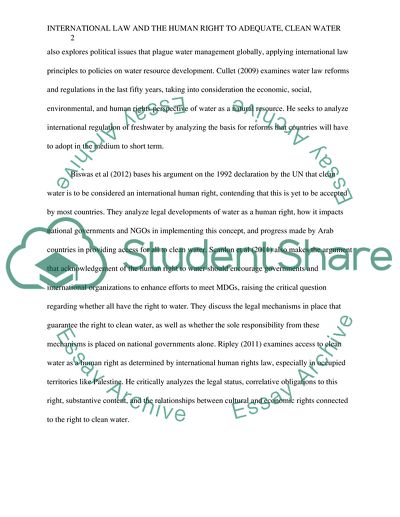Cite this document
(International Law and the Human Right to Adequate, Clean Water Case Study, n.d.)
International Law and the Human Right to Adequate, Clean Water Case Study. Retrieved from https://studentshare.org/law/1814214-choose-an-area-of-international-development-for-eg-the-right-to-clean-drinking-water-or-the-right-to-free-healthcar
International Law and the Human Right to Adequate, Clean Water Case Study. Retrieved from https://studentshare.org/law/1814214-choose-an-area-of-international-development-for-eg-the-right-to-clean-drinking-water-or-the-right-to-free-healthcar
(International Law and the Human Right to Adequate, Clean Water Case Study)
International Law and the Human Right to Adequate, Clean Water Case Study. https://studentshare.org/law/1814214-choose-an-area-of-international-development-for-eg-the-right-to-clean-drinking-water-or-the-right-to-free-healthcar.
International Law and the Human Right to Adequate, Clean Water Case Study. https://studentshare.org/law/1814214-choose-an-area-of-international-development-for-eg-the-right-to-clean-drinking-water-or-the-right-to-free-healthcar.
“International Law and the Human Right to Adequate, Clean Water Case Study”, n.d. https://studentshare.org/law/1814214-choose-an-area-of-international-development-for-eg-the-right-to-clean-drinking-water-or-the-right-to-free-healthcar.


